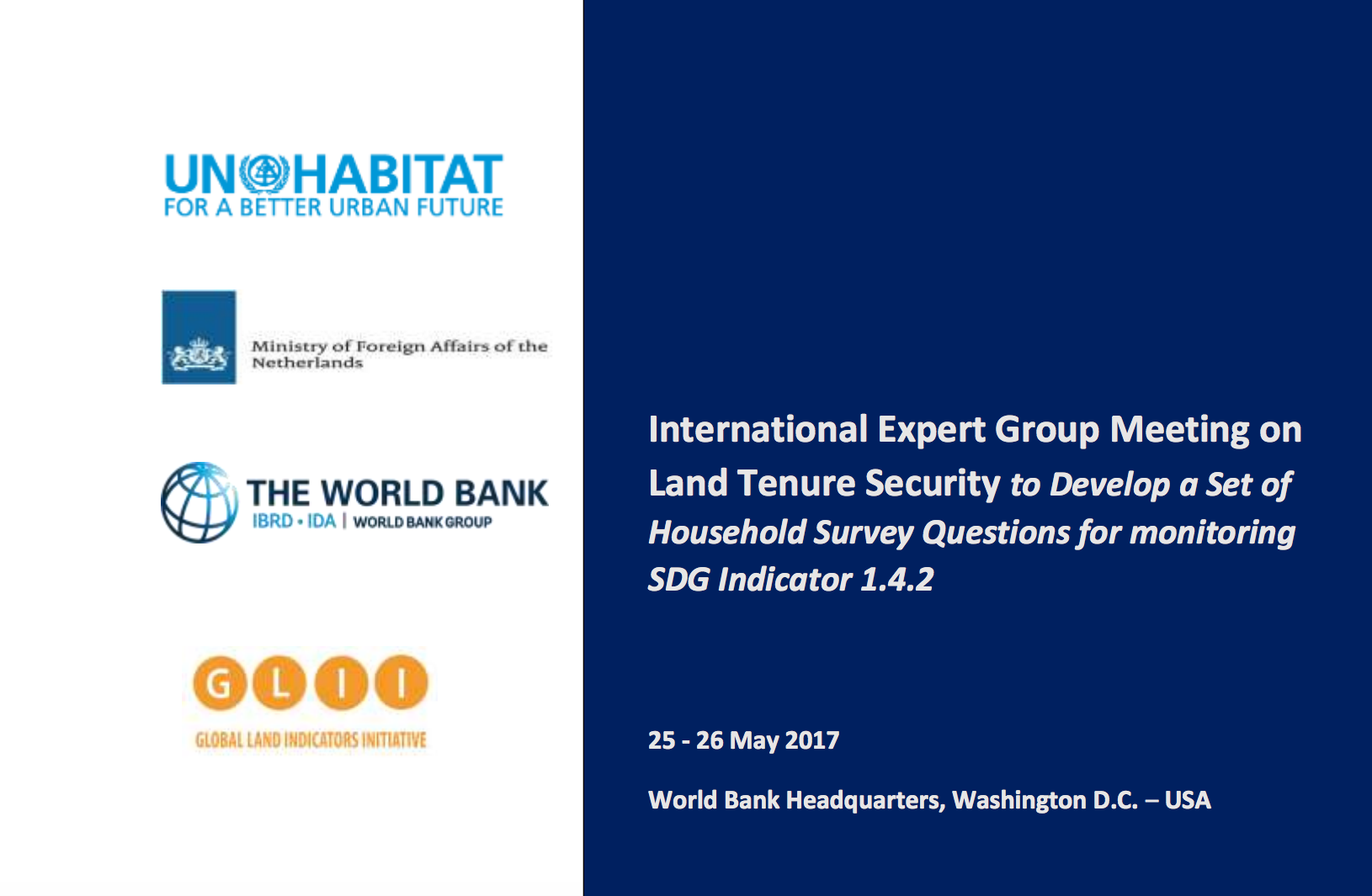Resource information
The World Bank Group and UN-Habitat as co-custodians of the SDG Indicator 1.4.2, in collaboration with the Global Land Indicator Initiative (GLII) organized an international Expert Group Meeting (EGM) at the World Bank Headquarters in Washington D.C. from 25 -26 May 2017 in preparation for the reclassification process of the SDG Indicator 1.4.2. The EGM was attended by over 35 participants, who included representatives of the Demographic and Health Surveys program (DHS), National Statistical Organization (Central Statistics Office) of India, Department of Land Resources of India, Census/ADDC USA, DANE – Colombia, National Bureau of Statistics of Tanzania, National Institute of Statistics of Cameroon, Statistical Institute Jamaica, Uganda Bureau of Statistics, International Land Tenure security expert organizations, the Asian NGO Coalition for Agrarian Reform and Rural development – ANGOC, Comité Technique Foncier et Développement, Habitat for Humanity, IFPRI, International Land Coalition, Land alliance Inc., Landesa, NRI - University of Greenwich, Oxfam, Africa Union Land Policy Initiative (LPI), Africa Centre for Statistics (ACS),UNFAO, UNECA, UNGGIM, UNSD- EDGE, UN Women, the Global Donor Working Group on Land (GDWGL), the Millennium Challenge Cooperation (MCC) and the Omidyar Network. (See annex and other annexes referenced in this report here: https://1drv.ms/f/s!AqTmCZ_aHrvuaa4Z7s5ISBt2WhY). Some participants followed the discussions online.
SDG Land Indicator 1.4.2 states: Proportion of total adult population with secure tenure rights to land, with legally recognized documentation and who perceive their rights to land as secure, by sex and by type of tenure, and is under SDG Goal 1 to End poverty in all its forms everywhere. It directly contributes to Target 1.4 that by 2030, all men and women, particularly the poor and the vulnerable, have equal rights to economic resources, in addition to access to basic services, ownership, and control over land and other forms of property, inheritance, natural resources, appropriate new technology, and financial services including microfinance.




